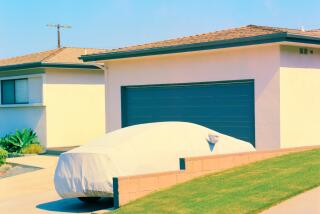Stendhal (1959)
“The Collectible Moment: Photographs in the Norton Simon Museum” is on view at the Pasadena museum through Feb. 26.
*
Because he developed tuberculosis, Frederick Sommer settled in Arizona. There he became friends with the painter Max Ernst, to whom Sommer’s photographs of trash in the desert, dead animals, an amputated foot, and chicken entrails appealed. The last was a particularly grisly subject, and the photograph seen here is reminiscent of it in composition.
Yet this image is anything but visceral. On the contrary, it’s as close to ethereal as photography can come. It was created from paint thinly applied to cellophane that was then sandwiched between pieces of glass and printed like a negative. Later, Sommer would make prints merely from smoke wafted onto cellophane.
He was fascinated with the desert because he’d been a landscape architect. But the architecture that affected his photography more was Mies van der Rohe’s glass pavilion, which Sommer saw in Barcelona in 1930. Just as Van der Rohe wanted to make buildings that would be, he said, “beinahe nichts”--almost nothing--so did Sommer want his photography to become “metaphysical” (a favorite word of his). Sommer wrote music in his own idiosyncratic way, too, and exhibited the results in order to represent sound visually. His most famous photograph is titled “Paracelsus,” after the father of modern alchemy.
More to Read
The biggest entertainment stories
Get our big stories about Hollywood, film, television, music, arts, culture and more right in your inbox as soon as they publish.
You may occasionally receive promotional content from the Los Angeles Times.










